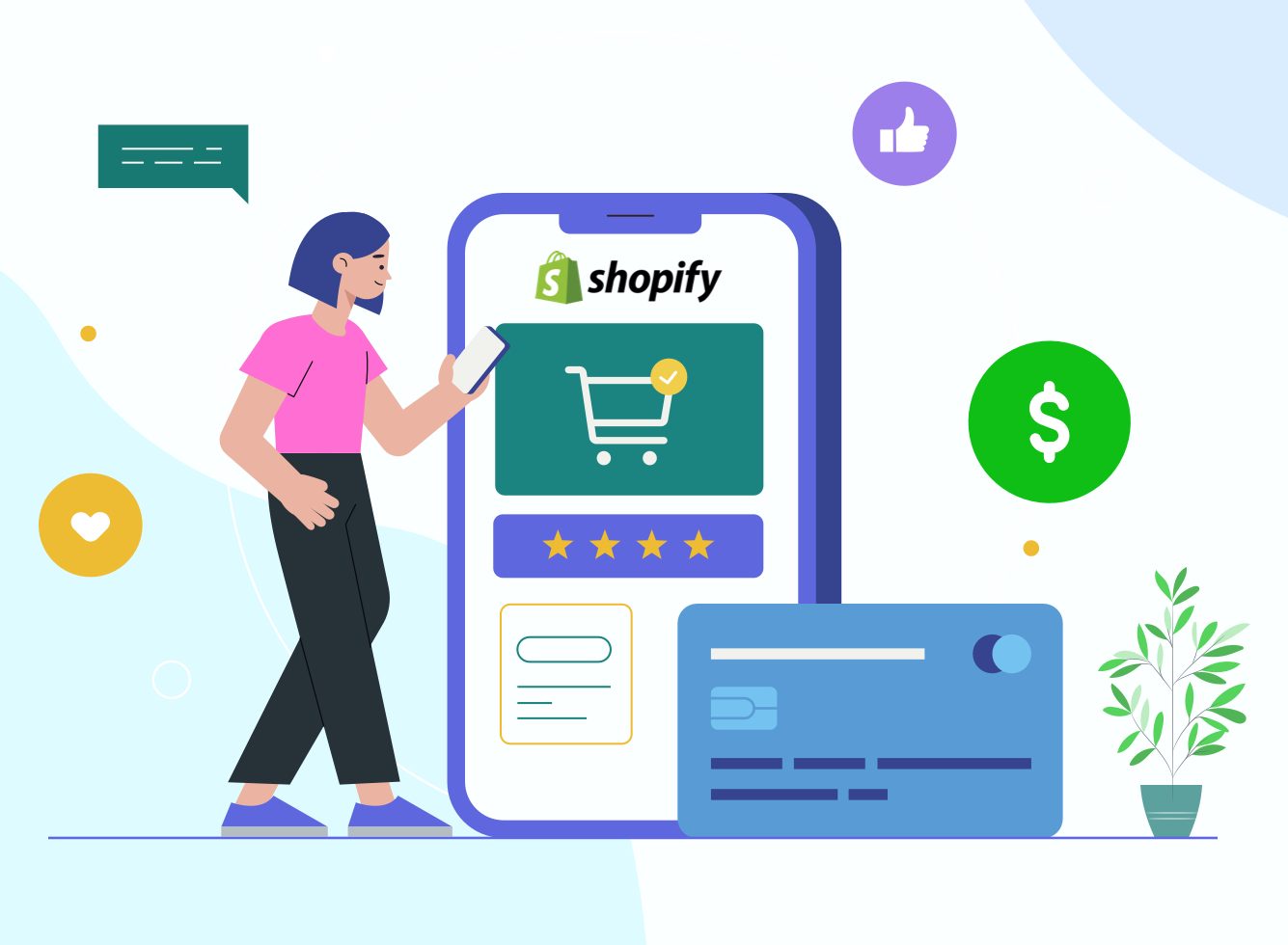Take Control of Your Checkout: A Guide to Shopify Checkout Extensibility

One common feedback was the need for more customisation flexibility. With the introduction of Shopify Checkout Extensibility, merchants can now take more control and personalise the checkout experience for their customers. It offers enhanced customisation, better performance, improved security, and timely updates, making it a more advanced alternative to the older “checkout.liquid”. Here’s a closer look at this new feature and how you can leverage it to optimise your checkout process.
What is Checkout Extensibility?
Checkout Extensibility allows merchants to easily create a custom Shopify checkout suited to their brand. This includes the ability to add, remove, or rearrange fields on the checkout page and customise various functionalities. This new feature was introduced in response to merchant feedback and aims to provide a more flexible and personalised checkout experience for customers.
The decision to introduce Checkout Extensibility was made by Shopify as part of their ongoing efforts to enhance the platform’s capabilities and support merchants in growing their businesses. The older “checkout.liquid” system had limitations in terms of Shopify checkout page customization, performance, and security, which prompted the need for a more advanced alternative.
Shopify recently announced that “checkout.liquid” will be deprecated for the Information, Shipping, and Payment pages on August 13, 2024. This means that after this date, merchants will no longer be able to use the old checkout customisation method and must upgrade to Checkout Extensibility to continue customising their checkout pages. The deadline of August 13, 2024 also gives merchants ample time to make the necessary changes and adapt to the new system.
Checkout Extensibility: Empowering Merchants with Code-Free Customisation Options
Shopify’s introduction of Checkout Extensibility has opened up a world of customisation possibilities for merchants, without the need for coding knowledge. With this powerful feature, merchants can completely personalise their checkout process to match their brand and cater to their customers’ needs.
Checkout Customisation
Checkout Extensibility allows merchants to fully customise the look and feel of their checkout pages by adding apps to their checkout. This means that merchants can now add features and functionalities, such as upsells, custom shipping options, or loyalty programs, directly to their Shopify custom checkout. These apps are designed with user-friendly interfaces and require no coding skills, making it easy for merchants to create a seamless and personalised checkout experience for their customers.
Checkout Editor
The Checkout Editor provides an intuitive interface for Shopify Plus merchants to make changes to their checkout pages. This can include the ability to customise the branding, logo, background image, colour, and font to match their brand. This level of Shopify checkout page customisation means that merchants can create a checkout page that aligns with their overall brand aesthetic and provides a cohesive shopping experience for customers.
Shopify Pixels
With Checkout Extensibility, merchants can also add Shopify Pixels to their checkout pages using an app called Web Pixels. These pixels collect valuable data on customer behaviour and purchasing patterns, which can then be used to optimise marketing strategies and improve the overall shopping experience.
Branding API
The Branding API is another powerful feature that enables merchants to customise their checkout pages at a code level. This allows for even more complex and unique customisations, giving merchants the flexibility to create a truly personalised checkout process.
Overall, Checkout Extensibility empowers merchants to fully control and customise their checkout process, resulting in a more seamless and memorable shopping experience for customers. With this level of flexibility, merchants can truly make their checkout process their own.
What Are the Benefits of Shopify Checkout Extensibility?
Through the implementation of Checkout Extensibility, merchants gain a wide range of benefits that ultimately enhance their online store and customer experience. Below are some key benefits of this update:
- Reduced cart abandonment: By allowing merchants to create a Shopify custom checkout, this update helps reduce cart abandonment rates, which is a major concern for many eCommerce businesses. With a smoother and more efficient checkout process, customers are less likely to abandon their carts and complete their purchases.
- Increased speed and conversion: The flexibility provided by Checkout Extensibility also allows merchants to improve the speed of their checkout page, resulting in faster loading times and a more seamless experience for customers. This can lead to higher conversion rates, as customers are less likely to get frustrated and abandon their purchase due to slow loading times.
- Better customer experience: A personalised and streamlined checkout process can greatly improve the overall customer experience. With Checkout Extensibility, merchants can tailor the checkout page to fit their brand’s aesthetic and ensure a consistent experience for their customers from start to finish.
- Build brand identity: The ability to customise the Shopify checkout page also allows merchants to showcase their brand’s personality and unique selling points. This can help build brand identity and differentiate them from competitors, ultimately leading to increased customer loyalty.
- Integration with Shop Pay: The Shopify Checkout Extensibility update integrates seamlessly with Shop Pay, a popular accelerated checkout method used by millions of customers. This provides a convenient and familiar checkout experience for customers, which can further reduce cart abandonment rates and increase conversion.
- Powerful new checkout features: In addition to customisation options, Checkout Extensibility also offers powerful new features that can improve the checkout experience for both merchants and customers. These include dynamic discounts, upsell and cross-sell opportunities and advanced shipping options.
- Upgrade-safety: With the Shopify Checkout Extensibility update, merchants can rest assured that any future updates or changes to the checkout process will not disrupt their customisations. The platform is constantly evolving and improving, but merchants can have peace of mind knowing that their customised checkout experience will remain intact.
- Enhanced security: Security is a top priority for both customers and merchants when it comes to online transactions. With Checkout Extensibility, merchants can ensure that their checkout process is secure and compliant with all necessary regulations.
Key Steps to Upgrade to Shopify Checkout Extensibility
To upgrade to Shopify Checkout Extensibility, merchants must meet the eligibility requirements and complete the following steps:
Eligibility Criteria
Before upgrading, you must meet the eligibility criteria:
- Your store must be on the Shopify Plus plan.
- Your store cannot utilise incompatible features with checkout extensibility. These include:
- Advanced Cash on Delivery
- In Flight API Mutations
- Unsupported Hosted Payment SDK Gateways
Steps to Upgrade to Checkout Extensibility
- Review Existing checkout.liquid Customizations
- Navigate to Online Store > Themes from your Shopify admin.
- Locate your active theme and click the ‘…’ button.
- Opt for Edit code to inspect your current checkout.liquid customisations.
- Familiarise yourself with the checkout.liquid layout.
- Create and Launch a New Checkout
- From your Shopify admin, head to Settings > Checkout.
- Within the ‘Checkout customization’ section, select Create draft checkout.
- Customise your checkout by integrating apps or adjusting your branding.
- Optionally, configure your Pixels or other first-party features.
- Review all changes made.
- To activate this new checkout, hit Publish.
- In the subsequent pop-up window, affirm your choice to overwrite your live checkout.liquid customizations.
- As Shopify introduces updates, your checkout will be refreshed automatically.
Note: Your draft checkout won’t inherit your existing checkout theme settings.
With these steps, you’re all set to take advantage of the power and flexibility of Shopify Checkout Extensibility.
Create Better Checkout Experiences with Shopify Checkout Extensibility
Congratulations, now you know how to utilise Shopify Checkout Extensibility for your eCommerce store. You can start taking advantage of this powerful tool to create a seamless and personalised checkout experience for your customers, while also gaining access to future updates and improvements.
But if you need more help, our Shopify agency is available to assist. At Vsourz, we are dedicated to helping merchants make the most out of their Shopify platform. As a Shopify development agency, we offer expert guidance and support to upgrade your checkout process from checkout.liquid to Shopify Checkout Extensibility. Our team of experienced Shopify developers will work with you to design, develop, and optimise your storefront for maximum conversions.
Don’t miss out on the opportunity to enhance your ecommerce store with Shopify Checkout Extensibility. Get in touch with us today to hire a Shopify developer.





